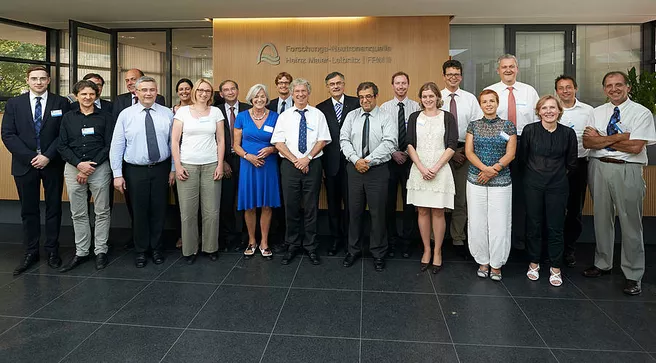28.07.2014
On Friday, July 18, a delegation from the French research organization CEA (Commissariat à l'énergie atomique et aux énergies alternative) and experts from the TUM met at the FRM II for initial talks to discuss a future close scientific cooperation in the important socio-economic issue sustainable energy. At this first meeting the knowledge and information on the existing expertise stood in the foreground, but it quickly became clear that research interests and already existing orientations excellently complement. The TUM focuses, but not exclusively, on the foundations of sustainable energies up to prototypes including study programs; the CEA is committed mainly to the transfer of basic knowledge and prototypes for industrial production. The aim of the talks, on which also TUM president Wolfgang A. Hermann took part, was to extend the long-standing cooperation between France and Bavaria, and especially TUM and CEA, now to the field of sustainable energy. This appears to be successful, because more talks this year have already been scheduled, which will culminate in concrete joint projects in a later meeting in the high-tech region around Grenoble. The talks were accompanied by the attaché of the CEA at the French Embassy in Berlin, Jean-Claude Perraudin, and the scientific attaché at the German Embassy in Paris, Stefan Kern. Apart from the TUM President and the two initiators of the talks, Prof. Winfried Petry and Daniel Iracane (Deputy Director of International Relations Division) Dr. Hannemor Keidel, TUM officer for relations with France, also took part. The CEA was represented by members of their sub-organization LITEN (Laboratory for Innovation in New Energy Technologies and Nanomaterials), headed by Bertrand Fillon (Vice President for European Affairs LITEN). For the TUM, experts from the Munich School of Engineering (MSE) took part.
FRM II and MLZ are important components for sustainable energy supply in the research at TUM. Neutrons show non-destructive and in-situ the electrochemical processes in batteries, point the way to high-temperature materials for more efficient batteries or illuminate hydrogen storage and fuel cells to make the molecular processes visible.
